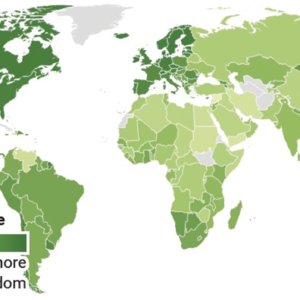Entity Protect Registered Agent Services LLC, 1925 Grand Ave Ste 127#430, (917) 695-7501, Boaron, Eliav, Service, Billings420 Lexington Ave Ste 2400, New York, NY 10170
Clean Queens, 139 Cerise Rd, (406) 894-0578, Nelson/Anderson, Kaye/Madison, Service, Billings
Eastridge Retreat LLC, 1945 Eastridge Dr, (801) 577-5769, Hurst, Emily, Real Estate Rental, Billings 8402 Hideaway Trail, Billings 59106
CK Investment Properties LLC, 354 Glenhaven Dr, (307) 359-1418, Holcomb, Cheryl, Real Estate Rental, Billings354 Glenhaven Dr, Billings
Subway #11991, 1038 Main St Ste 4, (307) 608-8989, Lovett (Partner), Jessi, Restaurants, Billings1211 24th St W Ste 5, Billings
Subway #18033, 2499 King Ave W Ste B, (307) 680-8989, Lovett (Partner), Jessi, Restaurants, Billings1211 24th St W Ste 5, Billings
Subway #17160, 2900 12th Ave N, (307) 680-8989, Lovett (Partner), Jessi, Restaurants, Billings1211 24th St W Ste 5, Billings
Schwartz Brothers, Masonry Inc, 2192 W Skokie Dr, (406) 248-3003, Schwartz, Taylor, Contractors, Billings
Steel Magnolias & Co, 1940 Grand Ave Ste A, (406) 698-8702, Smithson/Sorgenfrei, Jaclyn/Aimee, Cosmetology, Billings
R.O. Tools LLC, 847 Crist Dr, (406) 696-1484, Latham, Mitch, Retail Sales, Billings
Obsidian Sharp Edges LLC, 1721 Vuecrest Dr, (406) 672-5419, Howell, Amanda, Service, Billings
WCUB Dynasty LLC, 3021 4th Avenue S Apt 2, (406) 697-6853, Adams, Victor Anthony/Xander Michael, Retail Sales, Billings
McInnis Outdoors LLC, 923 Rimrock Rd, (406) 876-4234, McInnis, Melinda/Troy, Retail Sales,PO Box 52, Billings 59103
Mastech Solutions, 1720 Rosecrans Dr, (406) 927-7906, Mascarena, Esteban, Service, Billings
Blooms & Brooms, 811 Terry Ave, (406) 208-6862, Blake, Chenoa, Retail Sales, Billings
Hot Shots, LLC, 1503 Linda Ln, (509) 844-1285, Akins Sr, Jackie, Service, Billings
Albright Vending LLC, 7616 Lewis Ave, (208) 848-6587, Albright/Heger, Dalton/Therese, Retail Sales, Billings 59106, 934 Bench Blvd, Billings
Nidatwventure.Com, 7925 Eland Ave, (605) 430-7765, Wood, Nida, Misc, Billings 59106,
House Of Avery Bridal, 2111 Grand Ave, (406) 606-0504, Schell, Kady, Retail Sales, Billings
Performance Advantage, LLC, 517 24th St W, (435) 216-8785, Dunsdon, Irvin P, Solo Practitioner, Billings204 Wyoming Ave, Billings
Club Lux and Casino X, 1123 1st Ave N, (406) 794-9756, Lorenz, Cindy, Liquor License, Billings 5060 Maple Ridge Circle, Billings 59106
Earthbound Cafe LLC, 207 N Broadway Ste C30, (818) 515-7511, Ploeg/Johnson/Rogers, Joshua/Jessica/Nicholas, Restaurants, Billings41 Red Rock Dr, Billings
Ten40investing, LLC, 404 N 31st St Ste 423, (406) 409-3450, Bautista, Christian, Service, Billings
English Properties LLC, 5411 Frontier Dr #3, (406) 321-2082, English, Jenna, Real Estate Rental, Billings
Subway #17236, & Subway #35908, 3031 Grand Ave Ste 300, (307) 680-8989, Lovett (Partner), Jessi, Billings1211 24th St, W Ste 5, Billings
Subway #34791, 251 Main St, (307) 680-8989, Lovett (Partner), Jessi, Restaurants, Billings1211 24th St W Ste 5, Billings
Subway #45822, 820 Shiloh Crossing Blvd Ste F, (307) 680-8989, Lovett (Partner), Jessi, Restaurants, Billings, 1211 24th St W Ste 5, Billings
Subway #56984, & Subway #56985, 1649 Main St, 2525 King Ave W, (307) 680-8989, Lovett (Partner), Jessi, Restaurants, Billings, 1211 24th St W Ste 5, Billings
Children’s Art Classes, 1780 Shiloh Rd Ste D, (406) 661-2782, Hodge, Nicole, Service, Billings 59106
Bell Property Solutions LLC, 941 Rimrock Rd (406) 208-4693, Bell, Gard, Real Estate Rental, Billings, 12611 37th Place Ne, Lake Stevens, WA, 98258
Big Sky 4 Season Service LLC, 2124 Rehberg Ln Apt 3, (406) 561-4324, Herman, Trevor, Service, Billings Spectrum Hope Fund, 3932 1st Ave S Unit 2, (406) 530-5317, Huck, Timothy G, Service, Billings
Leprechaun Labs, 1420 Emma Ave, (952) 297-6049, McNichol, James & Laurie, Retail Sales, Billings
Body Remedies LLC, 720 Grand Ave, (509) 435-7567, Morin, Rashonda, Solo Practitioner, Billings821 N 27th Ste C-#1031, Billings
Sunshine Express (Cafe), 2390 Overlook Dr Ste 108/110, (406) 248-3320, Zentner, Marlee, Restaurants, Billings, 443 S 23rd St W, Billings
Almalli Wellness LLC, 777 15th St W, (406) 647-3000, Malli, Sarah, Service, Billings, 6800 Earl Ave, Huntley, 59037
Floorx, LLC, 610 Bench Blvd Suite 4, (406) 671-7820, Stovall, Clint, Service, Billings
Reahs Ministries, 1925 Grand Ave Ste 108, (406) 860-7785, Gavett, Rebekah, Service, Billings
Southpaw USA Inc, 10427 Mint Lane, (417) 540-1333, Holden, David, Contractors, Neosho, MO, 64850, Po Box 3715, Joplin, MO, 64803
O.M. Customs LLC, 13 W Antelope Trl, (541) 815-0567, Britt, Chance, Retail Sales, Billings
Dave Merkel Music & Sound LLC, 2500 Wyoming Ave, (406) 281-4006, Merkel, David G, Service, Billings
Platinum Cleaners, 3909 N Tanager Ln, (509) 969-0091, Scroggins, Joseph, Service, Billings
S.A.R. Painting LLC, 220 Yellowstone Ave, (506) 598-4757, Rogers, Steven, Service, Laurel, 59044
D&A Financial Services Inc. 111 S 24th St W, (406) 248-1006, Rogers (Accountant), Tanner, Retail Sales, Billings 2156 Hill Field Rd Ste 3, Layton, UT, 84041
Stone Soup Garden LLC, 2241 Old Us 10, (406) 853-5728, Certain, Patrick J, Retail Sales, Laurel, 59044
Barn Swallow Bread, 2720 Rehberg Ln, (406) 208-0309, Noel, Margaret, Retail Sales, Billings
Coulson City Construction, 1415 6th Ave N, (406) 717-9151, Reimers, Charlie, Contractors, Billings
Danielle Salo LMT, 1001 S 24th St W Bld 3 Room 310, (907) 978-3678, Salo, Danielle, Solo Practitioner, Billings
Four Directions, 2048 Overland Ave, (406) 647-8464, Contois, Shirley, Service, BillingsPO Box 80411, Billings
1111 New Beginnings, 2048 Overland Ave Suite 102b, (406) 210-8168, McCoy, Kendy, Service, BillingsPO Box 80411, Billings
R & R Roofing, 12 S 8th St W, (406) 661-3771, Ring, Chad, Contractors, Billings
It’s Spotless, 6709 High Hill Road, (406) 876-5433, Herden, Michelle, Service, Shepherd, 59079
Tup Tim Thai, 2916 1st Ave N, (406) 839-5078, Williams, Christopher/Srisuda, Restaurants, Billings
Crimson Stain Woodworks LLC, 6040 Severance Rd, (406) 661-0078, Tiry, Eric, Service, Billings
#1 Tobacco Vape and Cigar LLC, 1201 Grand Ave Ste 2, (313) 290-7615, Furooz, Radad, Retail Sales, Billings
Canyon Creek Construction LLC, 1639 Cheryl St, (541) 280-7940, Bennett, Kyle D, Contractors, Billings
Temco Logistics, 3218 S Frontage Rd Bld 100 Ste 104, (909) 492-4046, ParkerBerlinder, Service, Billings20 Executive Park Ste 200, Irvine, CA, 92614
Kolata Consulting LLC, 953 Neptune Blvd, (406) 855-2154, Kolata, Kera, Service, Billings
Yoders Donut Company LLC, 348 N Douglas St, (307) 254-1352, Yoder, Josh, Restaurants, Powell, WY, 82435
A Day To Care 2901 Monad Rd #99, (406) 927-9466, Ellthorpe, Charity, Service, BillingsPO Box 23201, Billings 59104
McRae Builders LLC, 3943 Pioneer Rd, (406) 860-2632, McRae, John, Contractors, Billings
Beevers Family Insurance, 2718 Montana Ave #216, (505) 635-0640, Beevers, William Michael,
Consor North America Inc, 1478 S 30th St W, (888) 451-6822, Cas, Matthew Paul, Engineer, Billings6505 Waterford District Dr Ste 470, Miami, FL, 33126
Waste Removal Of Montana LLC, 1925 Grand Ave, (406) 371-1564, Pyrzewski, Todd, Service, Billings
Beautifully Noted LLC, 6215 Ridge Stone Dr N, (605) 786-4645, Schneller, Brenda, Service, Billings
MCB Construction, 1109 Firth St, (406) 390-6164, Bradley, Michael, Contractors, Billings
Tony Derosa, 1559 Mullowney Ln, (406) 304-6944, Derosa, Anthony – Tony Derosa, Contractors, Billings
Resilient Recovery, 208 N Broadway Ste 346, (406) 794-2003, Mellum, Abbigail, Service, BillingsPO Box 82, Park City, MT, 59063
The Burger Dive, 1603 Grand Ave Suite 145b, (406) 281-8292, Halsten, Brad, Restaurants, Billings
Barnyard Bubbles, 624 Claremont Rd, (307) 202-3035, Kotar, Nicole, Restaurants, Billings
Vega Exteriors, 1015 N 24th St, (406) 694-4827, Collado, Urbano, Service, Billings
2 N It Cleaning LLC, 1107 High Ridge Dr, (406) 200-4546, Lynch/Bentham, Schaunna/Brittany, Service, Billings




